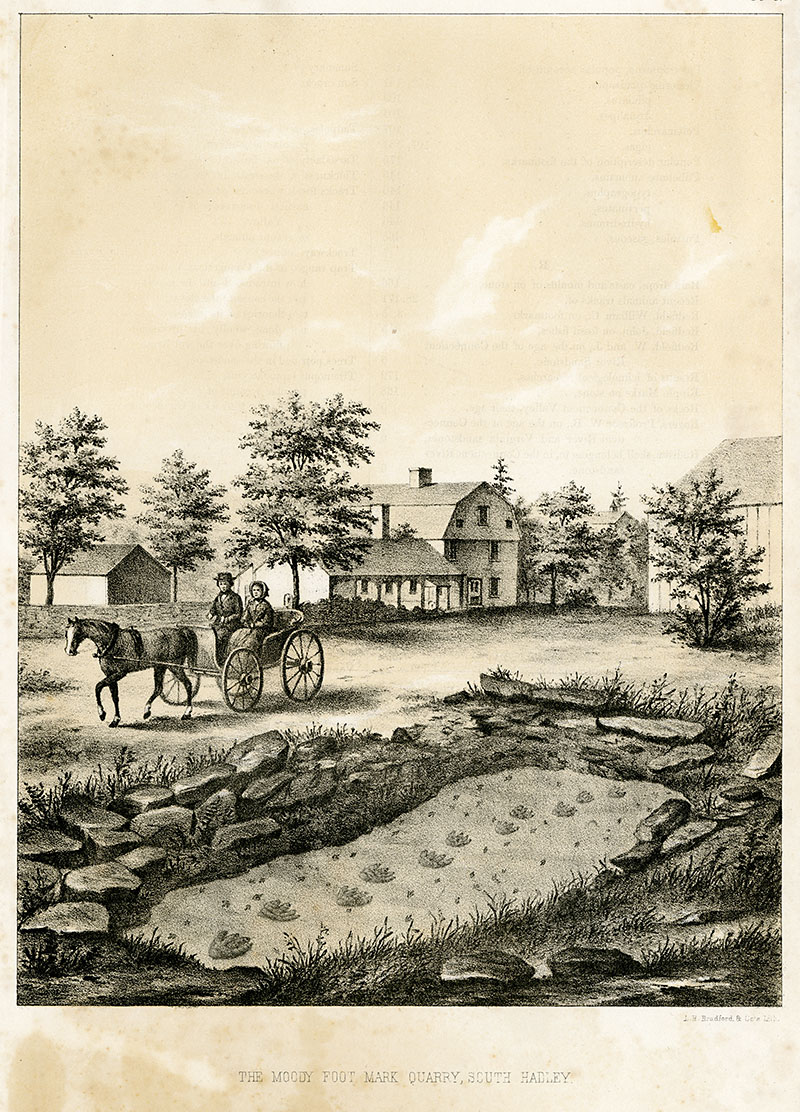 MENU
MENU
 MENU
MENU

"The Moody Footmark Quarry, South Hadley " plate I from Ichnology of New England Image courtesy of Pocumtuck Valley Memorial Association Library.
In South Hadley, Massachusetts, in 1801 or '02, a farm boy about 12 years old named Pliny Moody uncovered five birdlike footprints on a small rock ledge while plowing his father’s field. Pliny dug up a piece and probably used a horse or ox to drag it over to the house, where it was used as a doorstep for a few years. It was an interesting curiosity and the cause of speculation among the neighbors.
When Pliny left for Middlebury College in 1810, the slab was sold to a nearby doctor, Elihu Dwight. According to legend, either Pliny Moody or Dr. Dwight (the story varies) would tell people that the marks were the tracks of Noah’s raven, from the biblical story of the Flood and Noah's Ark. Whether sincere or joking isn’t known, but at least a few people are supposed to have taken the idea to heart. The biblical story was familiar to most people in Protestant Massachusetts at the time—children played with Noah's Ark toys, little wooden boats filled with carved animals—so this common point of reference would have been easily understood.
Dr. Dwight kept the slab of footprints for nearly three decades before passing it on to Edward Hitchcock, geologist at Amherst College, and one of the most well-known American scientists of the day. But by the time Hitchcock received Dr. Dwight's rock, he had heard about the stony footprints in a different way.